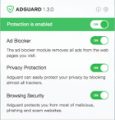What is ExtendedService
According to security experts, ExtendedService is a malicious app that belongs to the Adware family. It is designed just to display various popup windows and/or unwanted advertising using intrusive and at times dangerous methods. Adware can also include other forms of malware. It can steal user data from the machine and pass it on to third parties. Adware software has also been the basis for hacking to gain access to the Apple Mac.
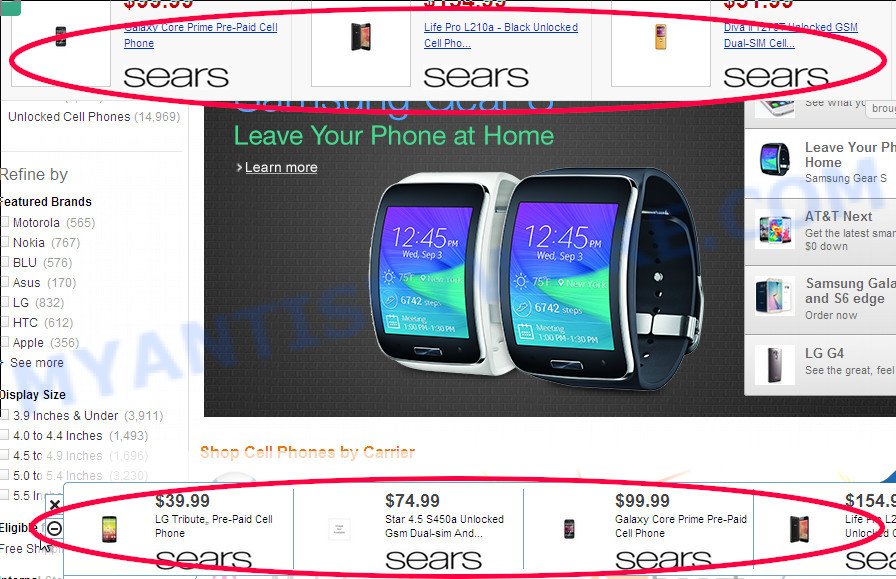
Unwanted ads
Another reason why you need to get rid of the ExtendedService adware is its online data-tracking activity. It has the ability to gather and transmit personal data without your permission. Adware can track information about web-sites visited, web browser and system information, and your computer IP address.
How does ExtendedService get on your machine
Adware software usually come bundled with free software . So, when you installing free apps, carefully read the disclaimers, select the Custom or Advanced setup type to watch for third-party software that are being installed, because certain of the software are PUPs and adware.
Threat Summary
| Name | ExtendedService, ExtendedService 1.0 app |
| Type | adware, potentially unwanted program (PUP), Mac virus, Mac malware |
| Detection Names | Trojan-Downloader.OSX.Adload, Program:MacOS/Vigram.A, Osx.Adware.Cimpli, ApplicUnwnt, Adware/Adload!OSX, OSX.Trojan.Gen, Adware.MAC.Generic and MacOS.Agent-MT |
| Distribution | Freeware installers, misleading popup ads, fake software updaters and torrent downloads |
| Symptoms | The webpage links redirect to a websites different from what you expected, ads appear in places they shouldn’t be, unwanted program installed without your say-so, new icons on your desktop, your web-browser startpage has modified and you are unable to change it back, slow browsing Internet. |
| Removal | ExtendedService removal guide |
How to remove ExtendedService from Mac device
When the adware gets installed on your MAC without your knowledge, it is not easy to uninstall. Most commonly, there is no Uninstall application that simply delete the ExtendedService adware from your computer. So, we recommend using a free removal tool such as MalwareBytes Anti Malware (MBAM). But the best way to get rid of ExtendedService adware will be to perform several manual steps, after that additionally run antimalware utilities.
To remove ExtendedService, complete the following steps:
- Remove unwanted profiles on Mac device
- Check the list of installed apps
- Remove ExtendedService related files and folders
- Scan your Mac with MalwareBytes
- Remove ExtendedService from Safari, Chrome, Firefox
- How to stay safe online
Remove unwanted profiles on Mac device
ExtendedService can install a configuration profile on the Mac system to block changes made to the browser settings. Therefore, you need to open system preferences, find and delete the profile installed by the adware software.
Click the System Preferences icon ( ![]() ) in the Dock, or choose Apple menu (
) in the Dock, or choose Apple menu ( ![]() ) > System Preferences.
) > System Preferences.
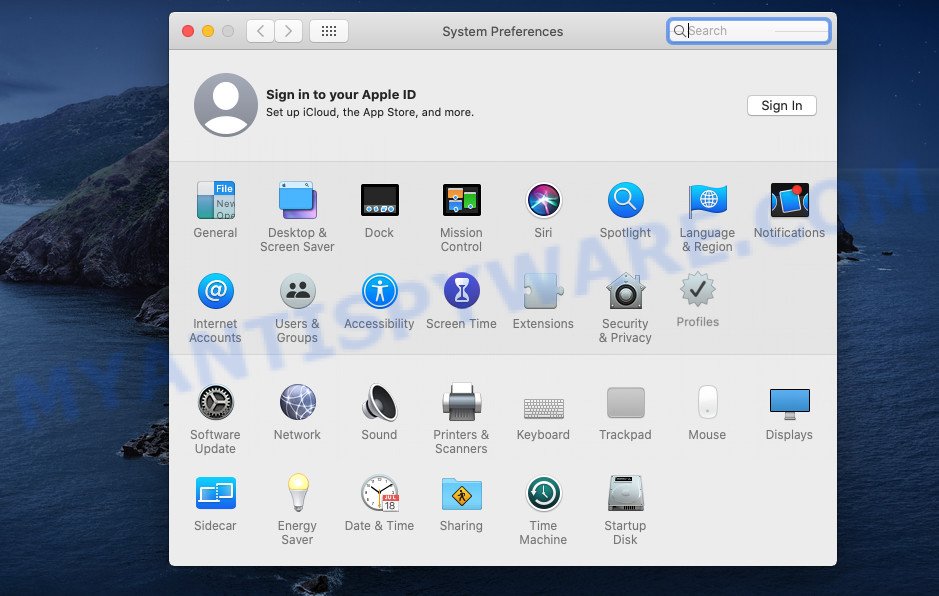
In System Preferences, click Profiles, then select a profile associated with ExtendedService.
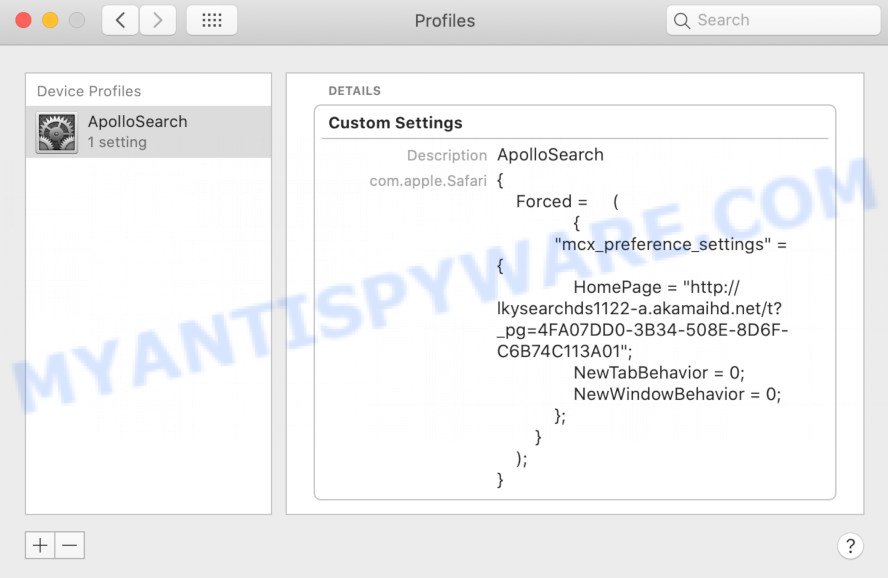
Click the minus button ( – ) located at the bottom-left of the Profiles screen to remove the profile.
Note: if you do not see Profiles in the System Preferences, that means there are no profiles installed on your Mac device, which is normal.
Check the list of installed apps
In the next step, you need to check the list of installed apps on your Mac computer and delete all unused, unknown and suspicious software.
Make sure you have closed all internet browsers and other apps. Next, uninstall any unrequested and suspicious applications from computer using the Finder.
Open Finder and click “Applications”.
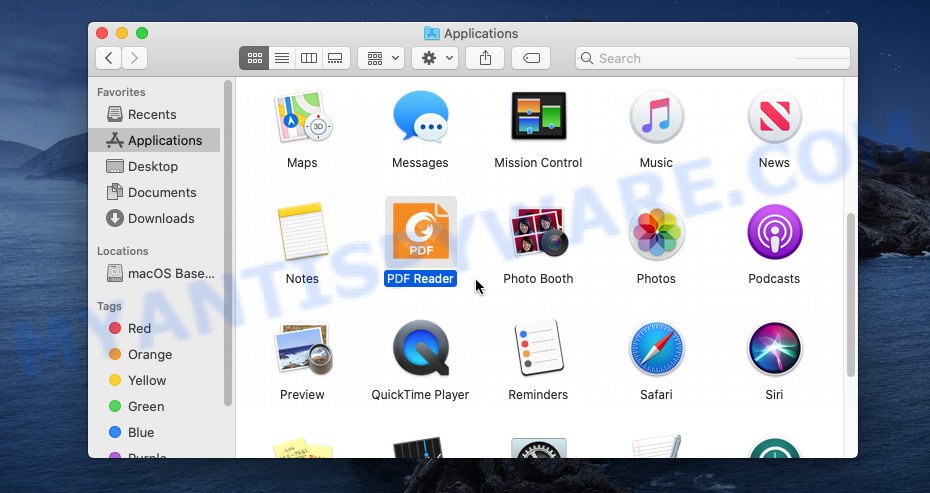
Look around the entire list of apps installed on your MAC OS. Most likely, one of them is the ExtendedService adware software. Choose the questionable program or the program that name is not familiar to you and remove it.
Drag the dubious program from the Applications folder to the Trash.
Most important, don’t forget, select Finder -> Empty Trash.
Remove ExtendedService related files and folders
Now you need to try to find ExtendedService related files and folders, and then delete them manually. You need to look for these files in certain directories. To quickly open them, we recommend using the “Go to Folder…” command.
ExtendedService creates several files, these files must be found and removed. Below is a list of files associated with this unwanted program.
- /Library/LaunchDaemons/com.ExtendedService.system.plist
- ~/Library/LaunchAgents/com.ExtendedService.service.plist
- /Library/Application Support/.(RANDOM)/System/com.ExtendedService.system
- ~/Library/Application Support/.(RANDOM)/Services/com.ExtendedService.service.app
Some files created by ExtendedService are hidden from the user. To find and delete them, you need to enable “show hidden files”. To do this, use the shortcut CMD + SHIFT + . Press once to show hidden files and again to hide them. There is another way. Click Finder -> Applications -> Utilities -> Terminal. In Terminal, paste the following text: defaults write com.apple.finder AppleShowAllFiles YES

Press Enter. Hold the ‘Option/alt’ key, then right click on the Finder icon in the dock and click Relaunch.
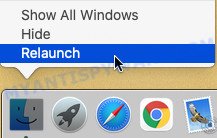
Click on the Finder icon. From the menu bar, select Go and click “Go to Folder…”. As a result, a small window opens that allows you to quickly open a specific directory.

Check for ExtendedService generated files in the /Library/LaunchAgents folder

In the “Go to Folder…” window, type the following text and press Go:
/Library/LaunchAgents
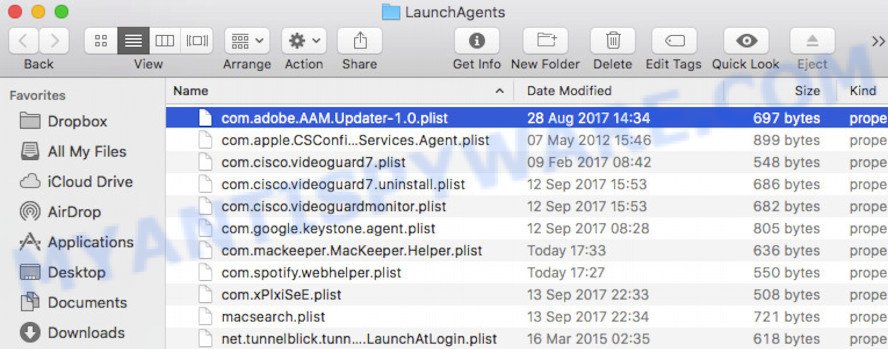
This will open the contents of the “/Library/LaunchAgents” folder. Look carefully at it and pay special attention to recently created files, as well as files that have a suspicious name. Move all suspicious files to the Trash. A few examples of files: com.google.defaultsearch.plist, , search.plist, com.ExtendedService.service.plist, installapp.plist, com.net-preferences.plist, macsearch.plist and com.machelper.plist. Most often, browser hijackers, PUPs and adware create several files with similar names.
Check for ExtendedService generated files in the /Library/Application Support folder

In the “Go to Folder…” window, type the following text and press Go:
/Library/Application Support
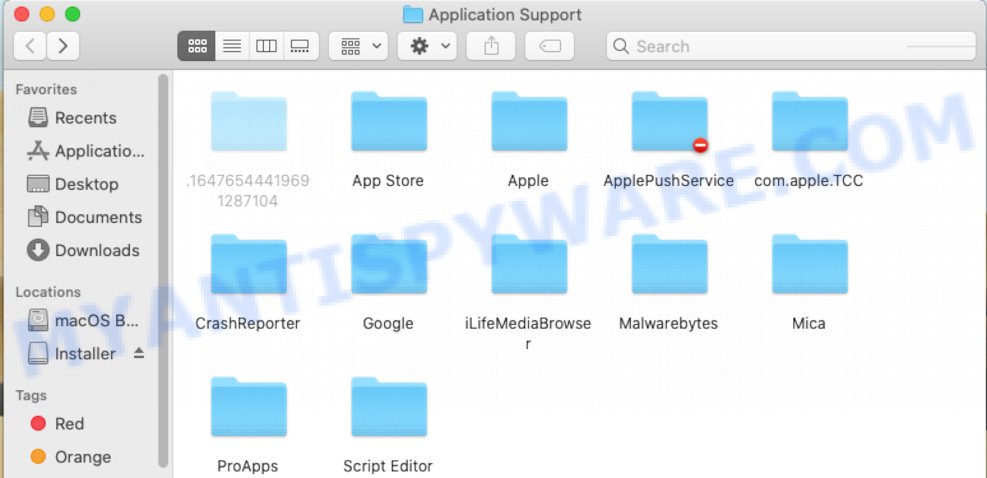
This will open the contents of the “Application Support” folder. Look carefully at its contents, pay special attention to recently added/changed folders and files. Check the contents of suspicious folders, if there is a file with a name similar to com.ExtendedService.system, then this folder must be deleted. Move all suspicious folders and files to the Trash.
Check for ExtendedService generated files in the “~/Library/LaunchAgents” folder

In the “Go to Folder…” window, type the following text and press Go:
~/Library/LaunchAgents

Proceed in the same way as with the “/Library/LaunchAgents” and “/Library/Application Support” folders. Look for suspicious and recently added files. Move all suspicious files to the Trash.
Check for ExtendedService generated files in the /Library/LaunchDaemons folder
In the “Go to Folder…” window, type the following text and press Go:
/Library/LaunchDaemons

Carefully browse the entire list of files and pay special attention to recently created files, as well as files that have a suspicious name. Move all suspicious files to the Trash. A few examples of files to be deleted: com.search.system.plist, com.macsearch.system.plist, com.ExtendedService.system.plist, com.installapp.system.plist and com.machelper.system.plist. In most cases, browser hijackers, potentially unwanted programs and adware create several files with similar names.
Scan your Mac with MalwareBytes
You can delete ExtendedService related files automatically with a help of MalwareBytes AntiMalware. We advise this free malicious software removal utility because it may easily get rid of adware, toolbars, PUPs and browser hijackers with all their components such as files, folders and system entries.
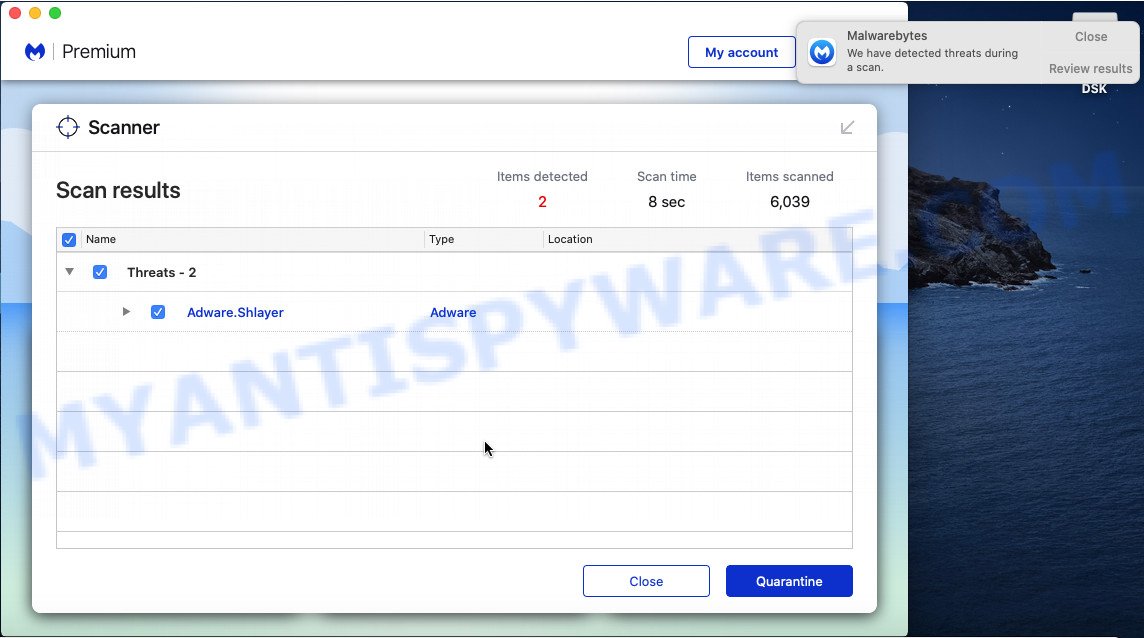
- Visit the page linked below to download the latest version of MalwareBytes for Mac OS.
Malwarebytes Anti-malware (Mac)
21020 downloads
Author: Malwarebytes
Category: Security tools
Update: September 10, 2020
- Once the downloading process is finished, close all apps and windows on your MAC OS. Open a file location. Run the downloaded file and follow the prompts.
- Click the “Scan” button to perform a system scan for the ExtendedService adware. While the utility is checking, you can see count of objects and files has already scanned.
- Once finished, MalwareBytes Free will open a scan report. You may delete items (move to Quarantine) by simply click “Quarantine”.
Remove ExtendedService from Safari, Chrome, Firefox
Annoying ExtendedService adware or other symptoms of adware in your web browser is a good reason to locate and get rid of harmful extensions. This is an easy way to restore web browsers settings and not lose any important information.
You can also try to remove ExtendedService by reset Chrome settings. |
If you are still experiencing problems with ExtendedService removal, you need to reset Mozilla Firefox browser. |
|
How to stay safe online
It is also critical to protect your web-browsers from malicious web-pages and ads by using an ad blocker program like AdGuard. Security experts says that it will greatly reduce the risk of malware, and potentially save lots of money. Additionally, the AdGuard can also protect your privacy by blocking almost all trackers.
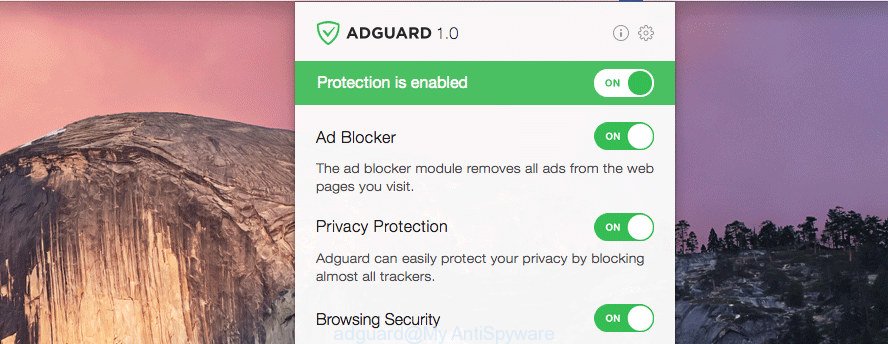
- AdGuard can be downloaded from the following link.
AdGuard for Mac download
3780 downloads
Author: © Adguard
Category: Security tools
Update: January 17, 2018
- After downloading is complete, start the downloaded file. You will see the “Setup Wizard” program window. Follow the prompts.
- When the install is done, click “Skip” to close the setup program and use the default settings, or click “Get Started” to see an quick tutorial which will help you get to know AdGuard better.
- In most cases, the default settings are enough and you do not need to change anything. Each time, when you start your computer, AdGuard will start automatically and stop unwanted advertisements, block malicious and misleading webpages.
To sum up
Now your Apple Mac should be free of the ExtendedService adware. We suggest that you keep AdGuard (to help you block unwanted pop up advertisements and annoying harmful web-pages) and MalwareBytes AntiMalware (MBAM) (to periodically scan your MAC OS for new malware, hijackers and adware). Make sure that you have all the Critical Updates recommended for Mac operating system. Without regular updates you WILL NOT be protected when new browser hijackers, malicious applications and adware are released.
If you are still having problems while trying to remove ExtendedService from your internet browser, then ask for help here.

